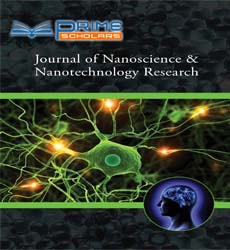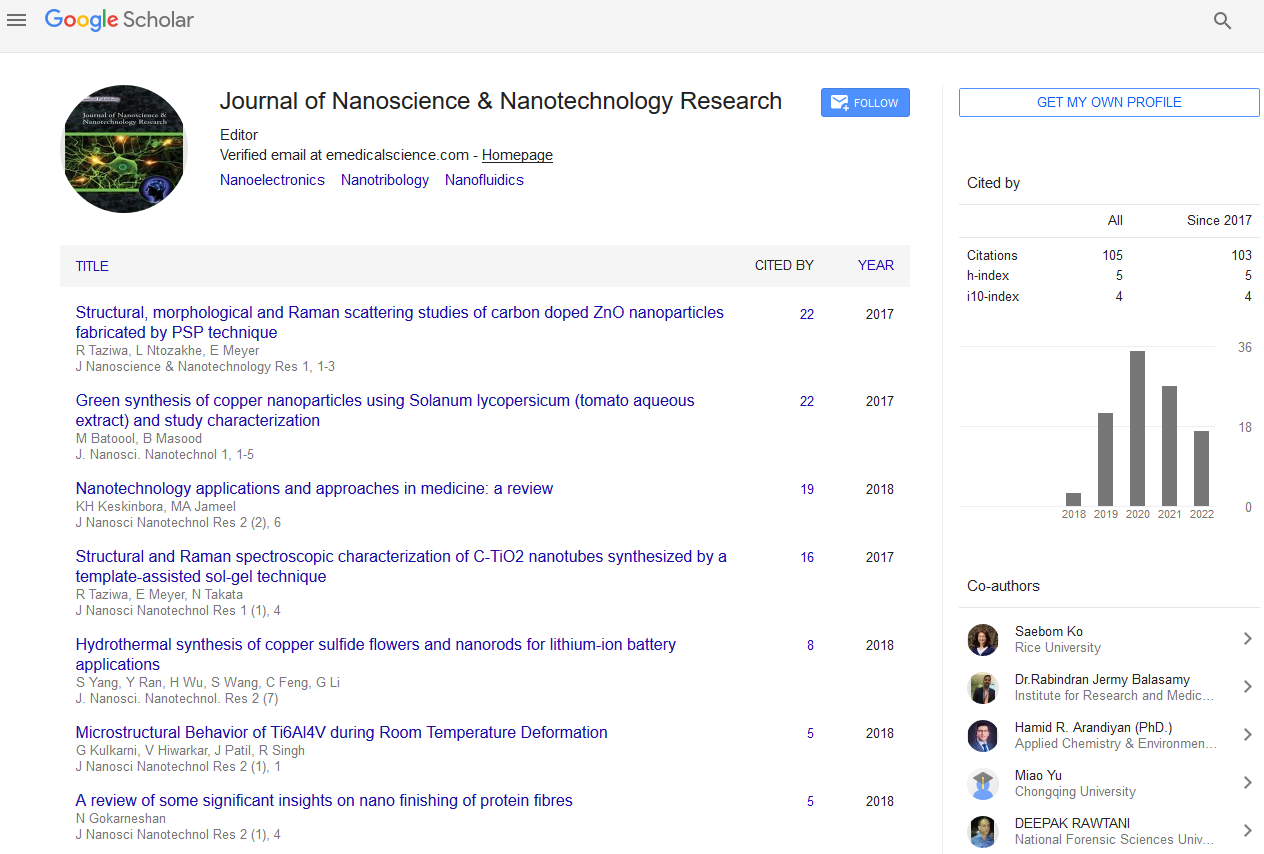Perspective - (2022) Volume 6, Issue 2
Nanotechnology and its Applications in Medicine
Department and Clinic of Endocrinology, Wroclaw Medical University, Poland
*Correspondence:
Mateusz Bugaj, Department and Clinic of Endocrinology, Wroclaw Medical University,
Poland,
Email:
Received: 02-Mar-2022, Manuscript No. ipnnr-22-13046;
Editor assigned: 04-Mar-2022, Pre QC No. ipnnr-22-13046 (PQ);
Reviewed: 18-Mar-2022, QC No. ipnnr-22-13046;
Revised: 23-Mar-2022, Manuscript No. ipnnr-22-13046 (R);
Published:
30-Mar-2022, DOI: 10.12769/ipnnr-22.6.21
Introduction
Nanotechnologies are new areas of exploration zeroing in on
influencing matter at the nuclear and sub-atomic levels. It is
certain that cutting edge medication can benefit incredibly
from it; along these lines nanomedicine has become one of the
fundamental parts of nanotechnological research. At present it
centres on growing new strategies for forestalling, diagnosing
and treating different illnesses. Nanomaterials show extremely
high effectiveness in obliterating disease cells and are now
going through clinical preliminaries. The outcomes are promising
to the point that nanomaterials could turn into an option
in contrast to customary malignant growth treatment, generally
because of the way that they permit disease cells to be
focused on explicitly and empower definite imaging of tissues,
making arranging further treatment a lot simpler. Nanoscience
could likewise be a wellspring of the required forward leap in
the battle against atherosclerosis, since nanostructures might
be utilized in both forestalling and expanding the solidness of
atherosclerotic sores. One area of interest is making nanomaterials
that are effective, yet additionally very much endured by
the human body.
Description
The human attributes of interest, miracle, and inventiveness
are basically as old as humankind. Individuals all over the
planet have been bridling their interest into request and the
course of logical strategy. Late years have seen a remarkable
development in research in the space of nanoscience. There
is expanding positive thinking that nanotechnology applied to
medication and dentistry will get huge advances the finding,
treatment, and anticipation of illness. Developing interest later
on clinical uses of nanotechnology is prompting the rise of another
field called nanomedicine. Nanomedicine requirements to beat the difficulties for its application, to work on the comprehension
of pathophysiologic premise of illness, bring more
modern demonstrative open doors, and yield more compelling
treatments and preventive properties. At the point when specialists
get to clinical robots, they will actually want to rapidly
fix most known illnesses that stumble and kill individuals today,
to quickly fix most actual wounds our bodies can endure, and
to incomprehensibly expand the human wellbeing length. In
this article, we have made an endeavour to have an early look
on future effect of nanotechnology in medication and dentistry.
Nanoparticle tests can supply imaging procedures with
improved signal responsiveness, better spatial goal and the capacity
to hand-off data on organic frameworks at atomic and
cell levels. Other likely utilizations of nanotechnology in medication
include: Nano adjuvants with immunomodulatory properties
used to convey immunization antigens; the nano-blade,
a nearly harmless technique for obliterating malignant growth
cells with high voltage power; and carbon nanotubes, which
are as of now a known approach to fixing harmed tissues and
may be utilized to recover nerves from here on out.
Conclusion
An (MRI) with cross breed tests of attractive nanoparticles and
adenovirus can identify target cells and screen quality conveyance
and articulation of green fluorescent proteins optically.
Nuclear methods like Positron Discharge Tomography (PET)
possibly give location awareness of higher greatness, empowering
the utilization of nanoparticles at lower focuses than allowed
by routine MRI. Basic attractive nanoparticles can work
as attractive reverberation imaging (MRI) contrast upgrade
tests. These attractive nanoparticles can then act as a centre
stage for the expansion of other practical moieties including
fluorescence labels, radionuclides and other biomolecules, for
multimodal imaging, quality conveyance and cell dealing.
Acknowledgement
None.
Conflict of Interest
The author declares there is no conflict of interest in publishing
this article.
Citation: Bugaj M (2022) Nanotechnology and its Applications in Medicine. J Nanosci Nanotechnol Res. 6:21.
Copyright: © Bugaj M. This is an open-access article distributed under the terms of the Creative Commons Attribution License,
which permits unrestricted use, distribution, and reproduction in any medium, provided the original author and source are
credited.

